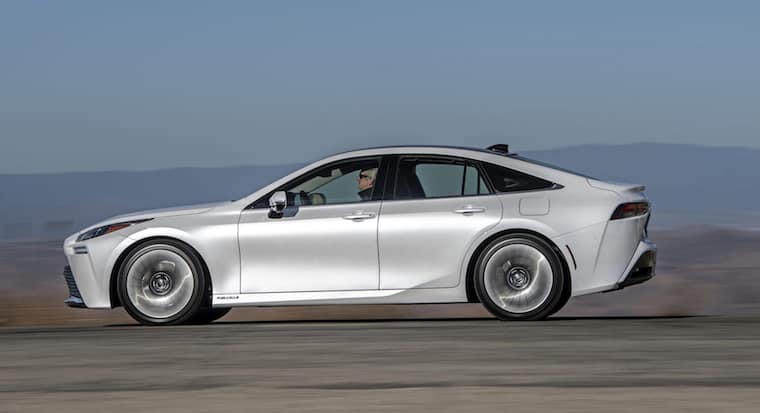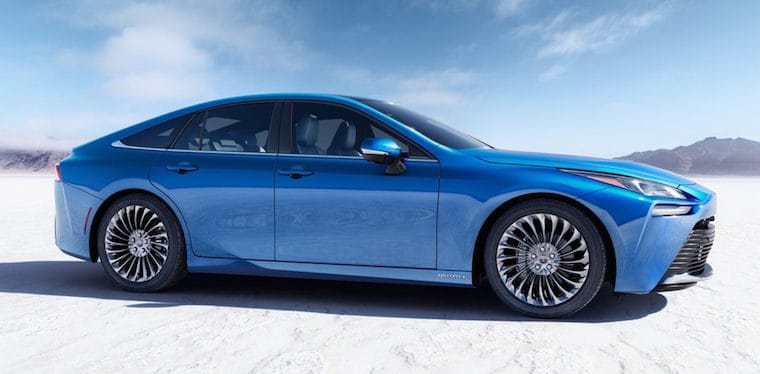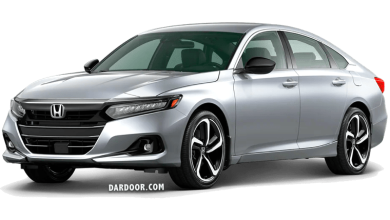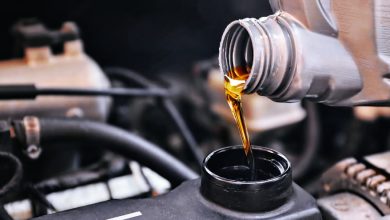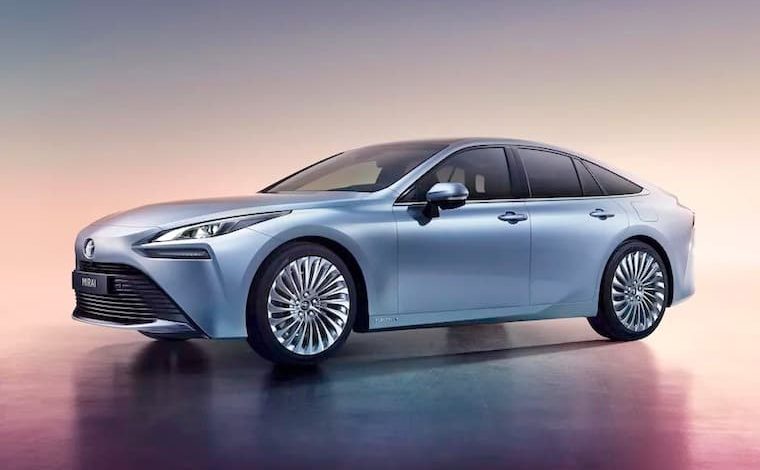
Toyota Mirai’s innovative fuel cell engine fuses hydrogen and oxygen, driving its electric motor with maximum possible efficiency.
Toyota’s vision for a sustainable hydrogen society recognises the importance of hydrogen as a viable and plentiful source of carrying and storing energy. It has the potential to deliver zero-carbon mobility, not just in road vehicles but equally in trains, ships and planes, and to generate power for industry, businesses and homes. It’s also an efficient means of storing renewable energy and can be transported to where it’s needed.
Toyota began the development of hydrogen fuel cell electric vehicles in 1992, successfully introducing the Mirai sedan to world markets in 2014. This breakthrough achievement was founded on the company’s world-leading experience in hybrid technology, the core technology for a wide range of different electrified vehicle powertrains.
The basic concept of hybrid power has successfully been adapted to produce hybrid electric (HEV), plug-in hybrid electric (PHEV), battery-electric (BEV) and – starting with the Mirai – fuel cell electric vehicles (FCEV). Each has qualities suited to different mobility requirements: for example, BEVs for shorter commutes and urban driving; HEVs and PHEVs for general and longer distance personal travel; and FCEVs for larger passenger cars, heavy-duty vehicles and public transport.
In 23 years of mass production, Toyota has sold more than 16 million hybrid vehicles worldwide, bringing the technology to the mainstream and helping save millions of tonnes of carbon emissions.
Now a new generation Toyota Mirai is being launched, a car that takes FCEV technology to a higher level and offers more emotional customer appeal in terms of dynamic, contemporary styling and more rewarding driving performance. A comprehensively redesigned fuel cell system, intelligent packaging and aerodynamic efficiency help extend the driving range to around 650 km, with no other emissions than pure water.
Increased hydrogen fuel cell system sales
The introduction of the new Mirai will see Toyota target deeper market penetration, supported by an increase in its hydrogen fuel cell production. As stated in Toyota Motor Europe’s Kenshiki Forum in December 2020 (see appendix below), the company expects global fuel cell system sales to increase 10-fold in the short term.
Growth in the Mirai’s sales will be supported by the new model’s stronger performance and greater customer appeal, notably as a more affordable vehicle with a selling price reduced by around 20%.
The practicality of hydrogen FCEV ownership will also steadily increase as markets improve their hydrogen infrastructure, the number of filling stations rises and Governments and local authorities introduce new incentives and regulations for cleaner mobility.
Toyota Mirai: Chief Engineer Yoshikazu Tanaka
“Toyota Motor Corporation (Toyota) sees hydrogen as an effective fuel for the future. Our aim is to help address environmental and energy issues through the mass production of fuel cell electric vehicles (FCEVs). These use hydrogen to operate, are very efficient, can travel long distances, have fast refuelling times and emit only water. They have enormous potential as environmentally friendly cars or ‘ultimate eco-cars’.

“In 2014, Toyota launched the Mirai as the world’s first commercial FCEV, hoping to contribute to the world by selling a car that it believed could become the driver of a hydrogen society for the next 100 years. To date, more than 10,000 have been sold worldwide. That first step helped open the doors to the hydrogen society and the FCEV market.
“However, because of slower than anticipated infrastructure development and resulting limits on the number of vehicles that can be introduced to the market, we are still only half-way to achieving widespread adoption of FCEVs. Additionally, customer feedback indicated the need for a longer cruising range and improved rear-seat comfort. There, to increase the demand for FCEVs, we need a vehicle with better basic performance and appeal that encourages more customers to buy one, even if infrastructure constraints remain.
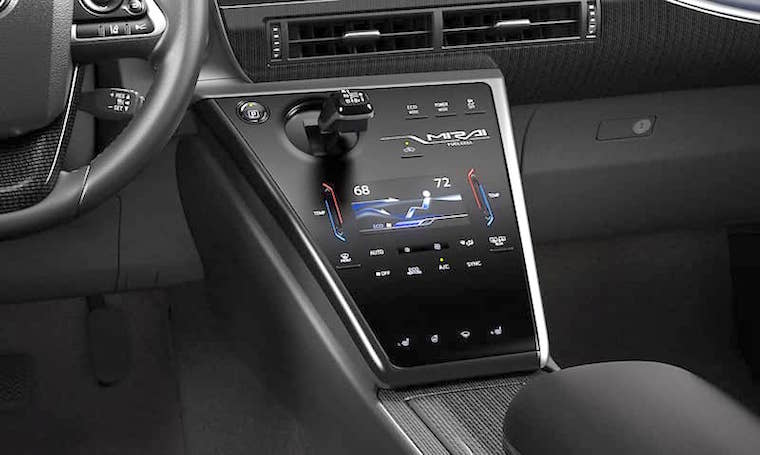
“We took all the customer feedback to heart and re-engineered the Mirai from the ground up, with the goal of creating a vehicle people would be excited to own. The development concept was ‘EDGE for a fun future’. This means the new Mirai was developed with the goal of creating a vehicle full of appeal, with edgy individuality and an emotional dimension. The new Mirai comes with the latest and highest levels of safety features.
“We have worked to make a car that customers will want to drive all the time, a car that has an emotional and attractive design and the kind of dynamic and responsive performance that can bring a smile to the driver’s face. I want customers to say ‘I chose the Mirai simply because I wanted this car – it just happens to be an FCEV.’
“I hope the new Mirai demonstrates sustainable and bright possibilities for the world and our children’s future as it helps us achieve a hydrogen society.”


